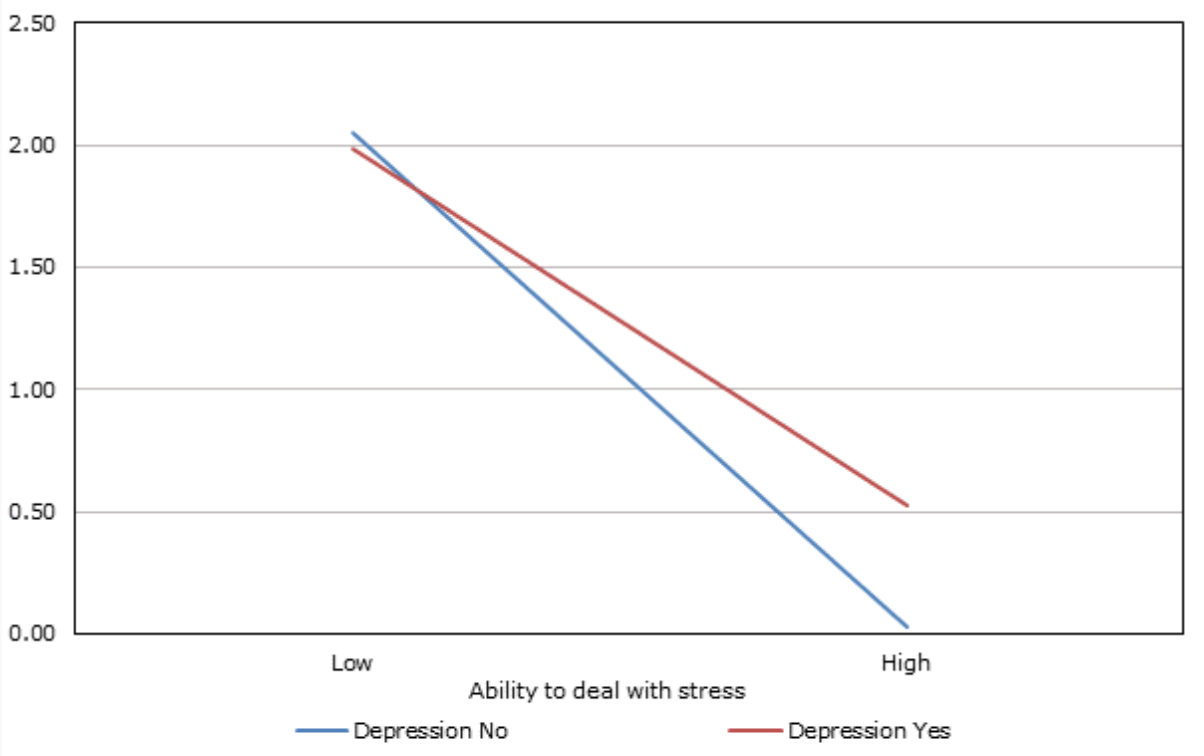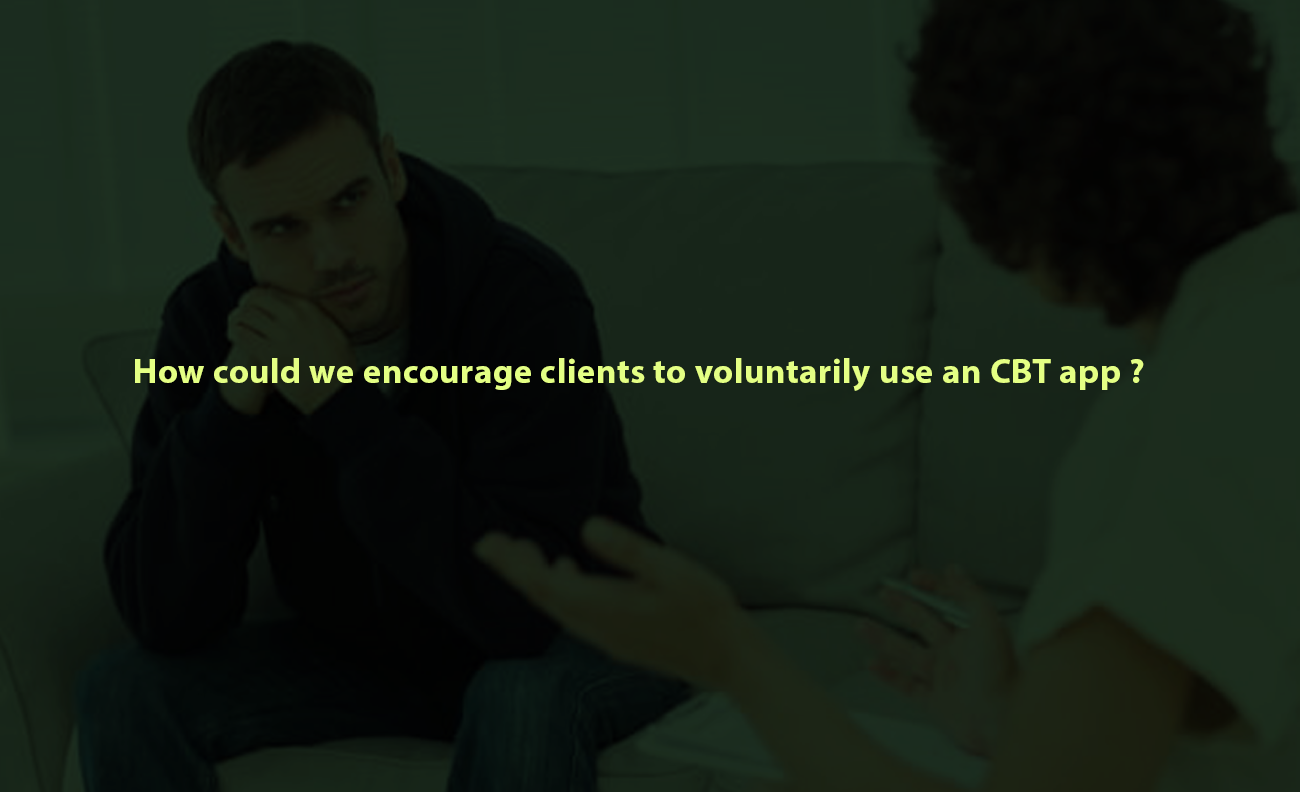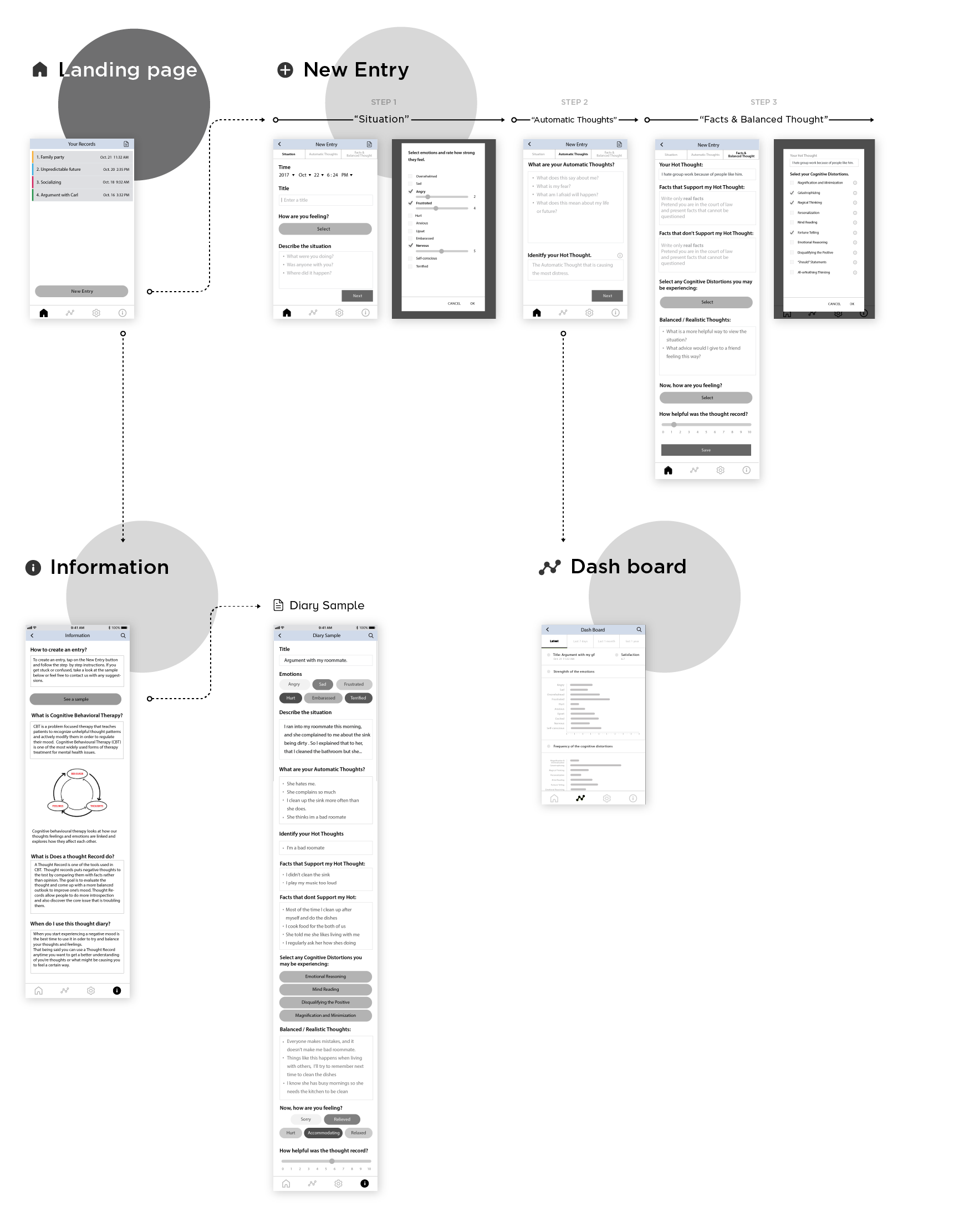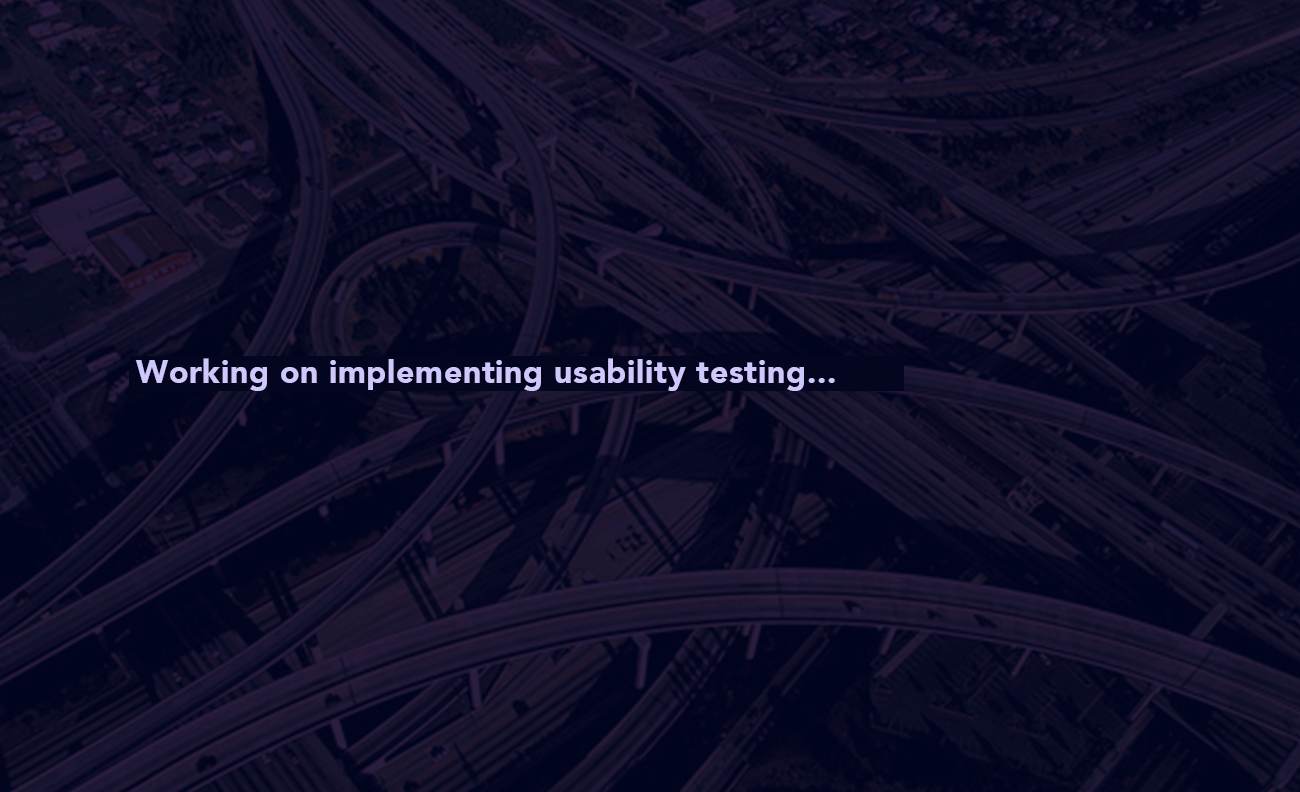ThoughtNote
UX Design
Team: Junha & Julia
Challenge: Conduct user research due to confidentiality of counselling and therapy, and create a system structure which encourages the users to use the app in the long term.
My Role: Design research, wireframing, prototyping, system structure and UX.
Media: Illustrator, Photoshop, InVision.
00
OVERVIEW
Enhancing clients experience in CBT
Cognitive Behavioral Therapy (CBT) mobile/web application for clients to recognize unhelpful thought patterns and modify them in order to regulate their mood.
ThoughtNote is a project done in collaboration with the Student Wellness Centre of Humber College. This project aims to find out what people who need Cognitive Behavioral Therapy, and provide an optimized user experience to them by meeting their needs. My other goal is also to learn more about psychological aspects of UI/UX design throughout the project.

Some of the materials I created for ThoughtNote.
01
THE CONTEXT
What is Cognitive Behavioral Therapy (CBT)?
Cognitive Behavioural Therapy (CBT) is one of the most widely used forms of treatment for mental health issues, particularly depression and anxiety. CBT is a problem focused therapy that teaches clients to recognize unhelpful thought patterns and actively modify them in order to regulate their mood.
CBT measures how our thoughts, feelings and emotions are linked and explores how they affect each other.
Mental health status in Canada
According to the Canadian Community Health Survey on Mental Health, among Canadians aged 15 to 24, the rate of depression is higher than at any other age, and suicide is the second leading cause of death. The current study provides detailed information about depression and suicidal ideation among young Canadians, including their use of mental health support.
ThoughtNote started from a curiosity towards the mental health issue and if design can have a positive influence in an individual and a community level.

Source: 2012 Canadian Community Health Survey-Mental Health
02
THE RESEARCH
From the mental health counsellor and his clients.
In order to conduct user research to clients who are treated by CBT, we worked closely with Bo who is the mental health counsellor of the Student Wellness Centre at Humber.
10 in-depth interviews
The goal of the research was to learn the whole process of CBT, how counsellors use the CBT method to clients, and what difficulties and unsatisfaction the clients have.
Challenge
Clients' unwillingness to participate in survery
The challenge that we faced when conducting user research is finding users that we would be able to survey. This is due to the personal nature, and confidentiality (sensitivity) of counselling and therapy, our approach was to connect with a subject matter expert at Humber College who may be able to help us with our research.
● Primary Groups:
- Anyone who is currently or has previously undergone cognitive behavioural therapy.
- Anyone who wants to learn how to use thought records to analyze their moods.
● Secondary Group:
- Therapists/Counsellors can use to recommend to patients instead of using pen and paper.
Categorized the emotions
We conducted card-sorting in order to decide on how to categorize the emotions.

Competitive Analysis
We discovered that the majority of current mental health treatment applications are based on mindfulness and meditation activities. These apps are designed to reduce a user's anxiety through exercises such as breathing, meditation and positive thinking. While these can be helpful, they do not directly address the user's negative thoughts. If a user's thoughts are persistent and triggering a user's distress, thought records may serve as a better tool to reduce their distress.
● Thought Diary
Pros
• Simple and easy to understand what to do next, easy to navigate.
• Greyed out text as an instruction in the text box is helpful for the user to grasp the steps.
Cons
• The user cannot rate how strong each individual emotion is.
• The app does not provide questions & examples the user can reference.
• "Facts that Support the unhelpful Thought" and "Facts that provide evidence against the unhelpful thought" are omitted in the CBT process.
● Catch It
Pros
• The top navbar has own titles draw attention using its own names for steps.
• The Example Page is linked to a separated tab which enhances the accessibility.
• Icons and graphic elements are effective to show the purpose and functionality of the app.
Cons
• The location of the Home button may confuse the users.
• Log-in & log-out feature seems unnecessary.
• With respect to information hierarchy, the About This App tab is not well-formatted.
● See Betty
Pros
• Step by step instructions are easy to understand.
• The CBT process includes "Facts that Support Thoughts" and "Facts that Do not Support Thought" which are crucial in CBT.
• The user is able to rate emotions from before and after the Thought Record.
Cons
• The excessive use of scroll bar makes ineffective user experience.
• Lack of lists of feeling options.
• It does not allow the users to save their Thought Records.
03
THE PROBLEM
The need of better accessibility
An integral part of CBT is creating Thought Records to evaluate and improve negative thoughts. In order to do so, users typically use a journal or pen and paper. When a negative thought occurs users may not have the convenience of writing out a thought record and remember each of the individual steps to follow. This poses a challenge for user’s ability to create records and ultimately manage their mood.
By having an application users could note down and access their thought records on throughout the day using their mobile device regardless of where they are.
Lack of information
With the respect of CBT, there is a systematic procedure in creating thought records to grasp what thoughts are based off facts and what are based off emotional reasoning. Through our competitive analysis we discovered that this feature does not exist in most of the CBT apps.
The current CBT apps do not have all the steps of the full thought record process:
● No section for "facts that support your thought"
● No section for "facts that do not support your thought"
● poor selection of emotions.

04
THE SOLUTION
ThoughtNote: Record, Analyze, and See Your Thought Patterns, Objectively.
ThoughtNote is a CBT Thought Record app that helps the users recognize and record their negative thoughts, and examine these thoughts to generate a more balanced mood.
How Does ThoughtNote Work?

ThoughtNote: Saving Thoughts and Grasping Thought Patterns by Checking Previous Records
ThoughtNote's primary goal is to recogonize the negative thoughts. The users need to see what thoughts and emotions they've had in order to see thier thought patterns.
05
THE TESTING
Usability Testing with Hi-fidelity Wireframe
We conducted fast usability testing with a hi-fi prototye following the Agile Process.













